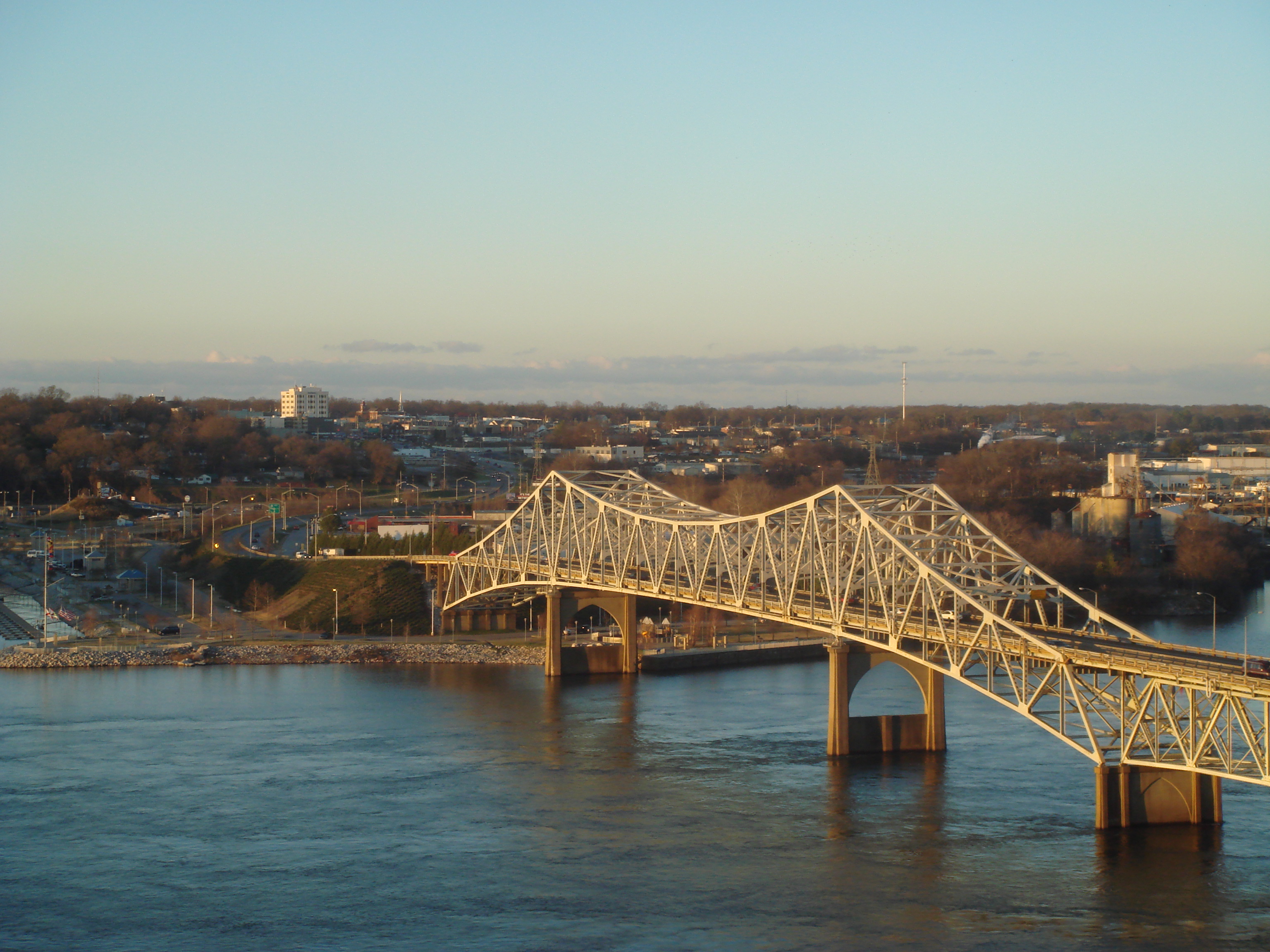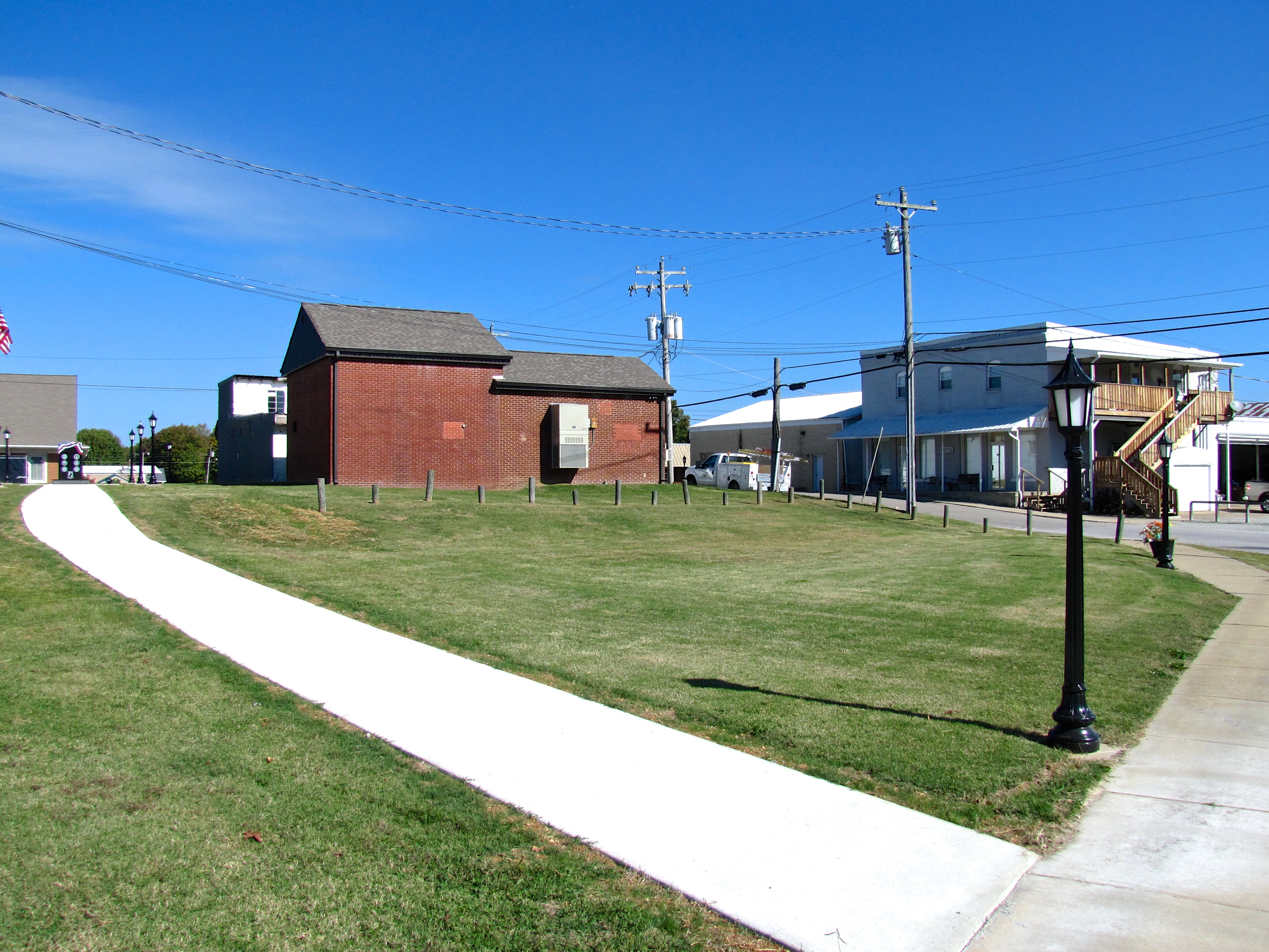|
Iron City, Tennessee
Iron City is a census-designated place and former city in Lawrence and Wayne counties, Tennessee. The population was 167 at the 2010 census. Iron City was incorporated as a city from 1887 to 1901, and again from 1962 until 2010, its residents voting to disincorporate in the latter year.Larry Miller, Tennessee Place Names' (Indiana University Press, 2001), 107. The United States Census bureau treated the community as a Census-designated place for both the 2010 and 2020 census. It had a population of 328 in 2010 and 274 in 2020. History Iron City gets its name from an iron foundry that operated in its vicinity in the late 19th century. While iron ore was mined in southwestern Lawrence County as early as the 1830s, the industry really began to thrive in 1886, when a branch railroad line to the area was completed. Iron City incorporated the following year. At its height, Iron City supported a population of about 1,000, and included two hotels and two banks. Geography Iron City ... [...More Info...] [...Related Items...] OR: [Wikipedia] [Google] [Baidu] |
Census-designated Place
A census-designated place (CDP) is a concentration of population defined by the United States Census Bureau for statistical purposes only. CDPs have been used in each decennial census since 1980 as the counterparts of incorporated places, such as self-governing cities, towns, and villages, for the purposes of gathering and correlating statistical data. CDPs are populated areas that generally include one officially designated but currently unincorporated community, for which the CDP is named, plus surrounding inhabited countryside of varying dimensions and, occasionally, other, smaller unincorporated communities as well. CDPs include small rural communities, edge cities, colonias located along the Mexico–United States border, and unincorporated resort and retirement communities and their environs. The boundaries of any CDP may change from decade to decade, and the Census Bureau may de-establish a CDP after a period of study, then re-establish it some decades later. Most unin ... [...More Info...] [...Related Items...] OR: [Wikipedia] [Google] [Baidu] |
Iron Ore
Iron ores are rocks and minerals from which metallic iron can be economically extracted. The ores are usually rich in iron oxides and vary in color from dark grey, bright yellow, or deep purple to rusty red. The iron is usually found in the form of magnetite (, 72.4% Fe), hematite (, 69.9% Fe), goethite (, 62.9% Fe), limonite (, 55% Fe) or siderite (, 48.2% Fe). Ores containing very high quantities of hematite or magnetite (greater than about 60% iron) are known as "natural ore" or "direct shipping ore", meaning they can be fed directly into iron-making blast furnaces. Iron ore is the raw material used to make pig iron, which is one of the main raw materials to make steel—98% of the mined iron ore is used to make steel. In 2011 the ''Financial Times'' quoted Christopher LaFemina, mining analyst at Barclays Capital, saying that iron ore is "more integral to the global economy than any other commodity, except perhaps oil". Sources Metallic iron is virtually unknown on ... [...More Info...] [...Related Items...] OR: [Wikipedia] [Google] [Baidu] |
Race (United States Census)
Race and ethnicity in the United States census, defined by the federal Office of Management and Budget (OMB) and the United States Census Bureau, are the Self-concept, self-identified categories of Race and ethnicity in the United States, race or races and ethnicity chosen by residents, with which they most closely identify, and indicate whether they are of Hispanic or Latino (demonym), Latino origin (the only Race and ethnicity in the United States, categories for ethnicity). The racial categories represent a social-political construct for the race or races that respondents consider themselves to be and, "generally reflect a social definition of race recognized in this country." OMB defines the concept of race as outlined for the U.S. census as not "scientific or anthropological" and takes into account "social and cultural characteristics as well as ancestry", using "appropriate scientific methodologies" that are not "primarily biological or genetic in reference." The race cat ... [...More Info...] [...Related Items...] OR: [Wikipedia] [Google] [Baidu] |
African American (U
African Americans (also referred to as Black Americans and Afro-Americans) are an ethnic group consisting of Americans with partial or total ancestry from sub-Saharan Africa. The term "African American" generally denotes descendants of enslaved Africans who are from the United States. While some Black immigrants or their children may also come to identify as African-American, the majority of first generation immigrants do not, preferring to identify with their nation of origin. African Americans constitute the second largest racial group in the U.S. after White Americans, as well as the third largest ethnic group after Hispanic and Latino Americans. Most African Americans are descendants of enslaved people within the boundaries of the present United States. On average, African Americans are of West/ Central African with some European descent; some also have Native American and other ancestry. According to U.S. Census Bureau data, African immigrants generally do not ... [...More Info...] [...Related Items...] OR: [Wikipedia] [Google] [Baidu] |
White (U
White is the lightest color and is achromatic (having no hue). It is the color of objects such as snow, chalk, and milk, and is the opposite of black. White objects fully reflect and scatter all the visible wavelengths of light. White on television and computer screens is created by a mixture of red, blue, and green light. The color white can be given with white pigments, especially titanium dioxide. In ancient Egypt and ancient Rome, priestesses wore white as a symbol of purity, and Romans wore white togas as symbols of citizenship. In the Middle Ages and Renaissance a white unicorn symbolized chastity, and a white lamb sacrifice and purity. It was the royal color of the kings of France, and of the monarchist movement that opposed the Bolsheviks during the Russian Civil War (1917–1922). Greek and Roman temples were faced with white marble, and beginning in the 18th century, with the advent of neoclassical architecture, white became the most common color of new churches ... [...More Info...] [...Related Items...] OR: [Wikipedia] [Google] [Baidu] |
Census
A census is the procedure of systematically acquiring, recording and calculating information about the members of a given population. This term is used mostly in connection with national population and housing censuses; other common censuses include censuses of agriculture, traditional culture, business, supplies, and traffic censuses. The United Nations (UN) defines the essential features of population and housing censuses as "individual enumeration, universality within a defined territory, simultaneity and defined periodicity", and recommends that population censuses be taken at least every ten years. UN recommendations also cover census topics to be collected, official definitions, classifications and other useful information to co-ordinate international practices. The UN's Food and Agriculture Organization (FAO), in turn, defines the census of agriculture as "a statistical operation for collecting, processing and disseminating data on the structure of agriculture, covering th ... [...More Info...] [...Related Items...] OR: [Wikipedia] [Google] [Baidu] |
Lauderdale County, Alabama
Lauderdale County is a County (United States), county located in the northwestern corner of the U.S. state of Alabama. At the 2020 United States census, 2020 census the population was 93,564. Its county seat is Florence, Alabama, Florence. Its name is in honor of Colonel James Lauderdale, of Tennessee. Lauderdale is part of the Florence-Muscle Shoals, Alabama, Muscle Shoals, AL Metropolitan Statistical Area, also known as "The Shoals". History Lauderdale County was named in honor of James Lauderdale, Col. James Lauderdale who was born in Virginia in about 1780. In the early 19th century, Lauderdale, who moved to West Tennessee, became a major in General John Coffee's cavalry of volunteers. Later promoted to lieutenant colonel, he commanded a brigade of mounted riflemen, serving under Andrew Jackson. According to reliable historians, Col. Lauderdale did not die in the Battle of New Orleans, but was wounded in the Battle of Talladega and died on December 23, 1814, seventeen days b ... [...More Info...] [...Related Items...] OR: [Wikipedia] [Google] [Baidu] |
Lawrenceburg, Tennessee
The city of Lawrenceburg is the county seat of Lawrence County, Tennessee, United States, The largest city on the state's southern border between Chattanooga and Memphis, it lies on the banks of Shoal Creek. The population was 11,633 at the 2020 United States Census. The city is named after War of 1812 American Navy officer James Lawrence. Located around southwest of Nashville at the junction of U.S. Routes 43 and 64, Lawrenceburg is called the "Crossroads of Dixie." History According to a recent theory, the Lawrenceburg area is the likely site of " Chicasa"—the place where Spanish explorer Hernando de Soto and his men wintered in 1540–41 (though earlier theories have suggested this campsite to have been in northern Mississippi). The Chickasaw Nation sold the area to the US in 1816. Upon moving from East Tennessee into the region around 1817, David Crockett served as a justice of the peace, a colonel of the militia, and a state representative. David Crockett establi ... [...More Info...] [...Related Items...] OR: [Wikipedia] [Google] [Baidu] |
Westpoint, Tennessee
Westpoint (also West Point) is an unincorporated community in Lawrence County, Tennessee Tennessee ( , ), officially the State of Tennessee, is a landlocked state in the Southeastern region of the United States. Tennessee is the 36th-largest by area and the 15th-most populous of the 50 states. It is bordered by Kentucky to th ..., United States. Its ZIP code is 38486. Demographics Notes Unincorporated communities in Lawrence County, Tennessee Unincorporated communities in Tennessee {{LawrenceCountyTN-geo-stub ... [...More Info...] [...Related Items...] OR: [Wikipedia] [Google] [Baidu] |
Tennessee State Route 242
State Route 242 (SR 242) is a north-south state highway that lies mostly in Lawrence County, Tennessee. It connects Iron City with Henryville via Westpoint and Lawrenceburg. Route description SR 242 begins in Lawrence County in Iron City at an intersection with SR 227. It heads north as Wayland Springs Road to temporarily cross into Wayne County before returning to Lawrence County and leaving Iron City to wind its way northeast through mountains, running parallel to Shoal Creek. It then crosses over Factory Creek to pass through Westpoint before winding its way through some more mountains as West Point Road. The highway then enters farmland shortly before entering Lawrenceburg at an interchange with US 64/SR 15. SR 242 turns northward to pass through some neighborhoods before coming to an intersection and becoming concurrent with US 64 Business (W Gaines Street). They head east along the southern end of David Crockett State Park David Crockett State Park is a s ... [...More Info...] [...Related Items...] OR: [Wikipedia] [Google] [Baidu] |
Collinwood, Tennessee
Collinwood is a city in Wayne County, Tennessee, United States. The population was 982 at the 2010 census, down from 1,024 in 2000. History Collinwood was established in 1913 as a stop on the Tennessee Western Railroad, a rail line constructed to serve the area iron industry. The city was named for W.W. Collins, president of the Collinwood Land Company, which platted the city. While the railroad, which intersected the L&N system at Iron City, was originally to extend northward to Hohenwald, plans for extension beyond Collinwood never materialized, and the city became the railroad's western terminus.Richard Quin and Miranda RocheNational Register of Historic Places Inventory Form for Collinwood Railroad Station September 1987, Sec. 8, pp. 1-4. The Collinwood Land Company advertised lots for the new city in June 1913, and by the following year, about 300 people were living in the city. Most of the residents worked for the railroad or in the local lumber industry. During Wo ... [...More Info...] [...Related Items...] OR: [Wikipedia] [Google] [Baidu] |







